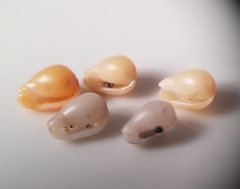Snail
Gastropoda
Mollusca Gastropoda is a large and diverse class of mollusks, commonly known as snails and slugs. This group is characterized by a single, usually spirally coiled shell into which the body can retract for protection, although some have lost their shells over evolutionary time.
Characteristics:
- Shell: Most gastropods have a univalve shell, which may be coiled or conical. Some, like slugs, have reduced or internal shells.
- Body: The body is divided into distinct head, muscular foot, and visceral mass.
- Tentacles: Many gastropods have two pairs of tentacles on their head, one pair with eyes.
- Movement: They move using a muscular foot which produces a wave-like motion.
- Habitat: Gastropods inhabit a variety of environments, including marine, freshwater, and terrestrial ecosystems.
In the Comunidad Valenciana, gastropods are commonly observed both in natural areas and urban gardens. Known locally as "caracoles" or "babosas," they play a significant role in the ecosystem, such as in nutrient recycling and as a food source for other wildlife.
Diet: Gastropods are primarily herbivorous, grazing on algae or plant material, but some are carnivorous or detritivorous.
Reproduction: Many gastropods are hermaphrodites, possessing both male and female reproductive organs, although cross-fertilization is common.
Gastropods are not only vital to the ecosystem balance but also hold cultural and economic significance in regions like the Comunidad Valenciana, where some species are consumed as traditional delicacies.







